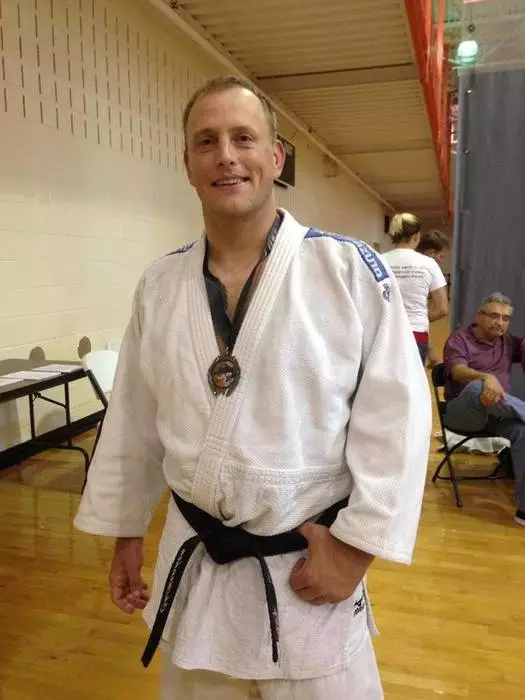
Jiu-Jitsu is as Easy as Pi (π)
In mathematics, the number π (Pi) represents the ratio of a circle's circumference to its diameter. No matter the size of the circle—be it a baseball, the moon, or even the known universe—that ratio will always equal approximately 3.14159. Pretty neat, right? This simple yet universal constant allows us to calculate the circumference, area, or volume of circular and cylindrical shapes with predictable accuracy.
For example, if you wanted to find the volume of a water tank with a radius of 5 and a height of 9 that was two-thirds full, you'd use the formula V = πr²h. First, you'd determine the height of the water level (2/3 x 9 = 6). Then, you'd calculate V = π x 5² x 6, giving you 150π. Approximating π as 3.14159, you'd arrive at 471.2385, or roughly 471 units of water.
So, what does this have to do with Jiu-Jitsu?
Well, in my view, Jiu-Jitsu is essentially applied physics and physiology. At its core, it’s about using our bodies to create frames and levers to achieve maximum efficiency when applying techniques to control, submit, or escape an opponent. And at the root of physics? You guessed it—mathematics.
When teaching Jiu-Jitsu, I often talk about mechanics and concepts, which are, in essence, our formulas. Just like you can't memorize every mathematical solution for every variable, you can't memorize a Jiu-Jitsu technique for every possible scenario. Think about it: your opponent's height, weight, skill level, the surface you're fighting on, the presence of weapons, or even whether you're fighting one opponent or five—these are all variables. Trying to memorize a solution for each unique combination is impossible.
Instead, we rely on principles—formulas, if you will—that we can adapt to any situation. In math, we start with the basics: addition, subtraction, multiplication, and division (ASMD). In Jiu-Jitsu, our ASMD consists of foundational movements, establishing a base, creating angles, and building frames. Just like a math student drills these basic operations until they're second nature, a Jiu-Jitsu student practices these foundations over and over until they become instinctual.
From there, we add complexity. In math, we move on to algebra and geometry, applying formulas to more challenging problems. In Jiu-Jitsu, we move to positional sparring, where we test techniques against resisting opponents. Then we level up again. In math, we might venture into calculus to tackle theoretical problems. In Jiu-Jitsu, we pressure-test our skills in live sparring, introducing unpredictable variables.
Finally, there's the real-world application—a math problem so complex it requires every tool in your kit. In Jiu-Jitsu, that's competition or a real-life altercation. The hope is that all those hours spent mastering fundamentals and drilling formulas have prepared you to adapt to the unpredictable nature of the situation.
So how is Jiu-Jitsu as easy as Pi?
Both start with foundational knowledge and build toward increasingly complex applications. Both rely on principles and formulas rather than rote memorization of every possible scenario. And, perhaps most importantly, both are endlessly applicable, whether you're solving a mathematical equation or fighting your way out of an armbar.
At the end of the day, Jiu-Jitsu, like Pi, isn't about knowing every answer—it's about understanding the formulas well enough to solve any problem that comes your way.
